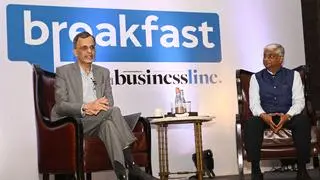An Empowered Group of Ministers headed by Defence Minister A.K. Antony is likely to meet on July 25 to finalise the bidding norms for ultra mega power projects (UMPP).
The finalisation of bidding norms would facilitate award of UMPPs worth 4,000 MW proposed at Bedabahal in Odisha, Cheyyur in Tamil Nadu and Surguja at Chhattisgarh.
Case-II projects
The Power Ministry has readied new standard bidding documents (SBDs) that would be applicable for projects where the fuel source is determined in advance, generally known as Case-II projects.
Case-II projects are those which will either have a captive mine attached to them or linkage will be provided from domestic mines.
Bidding documents
According to the latest standard bidding documents, to be vetted by eGoM, the bidder offering the most efficient capacity charge and heat value would be judged the winner. The latest document has treated fuel cost as pass-through.
“If there is a captive block attached, there would not be any case of shortfall. If it is a case of linkage, the mechanism provides for the shortfall to be made up with market coal,” a senior Power Ministry official told Business Line .
The power producer will be allowed to sell electricity in the market if the distribution utility does not want to pay for expensive imported coal or fuel procured through e-auction in the proposed new norm. Moreover, the distribution company will have to pay for fixed charges if the power producer is not selling to other customers.
The other significant change introduced is that there will be a single parameter for competition, which is capacity charge.
In the existing model, a bidder has to give nearly 54 price quotes spread over 25 years. But, now it has been proposed that as the fuel cost is made pass-through now, there would be no quotes for fuel charges. The capacity charge would be linked to depreciation and loan repayment.
At the same time, it will be linked to the inflation index.
“In this model, the power producer will not suffer because of higher inflation. The matrix is given in the bid document. The bidder would know the exact percentage in capacity cost that will be linked to inflation and depreciation,” the official said.
In addition, the heat rate of the power plant will be determined at the time of commissioning. “If the heat rate is better than the one being quoted at the time of bidding, the developer will get an incentive,” the official said. However, there is no change regarding land ownership, which was an important demand of the power producers.
“Land is being procured by the State and is given to a power producer for setting up a power plant. And eventually the land will come back to the State,” said the official.
The proposed norm changes the plants from a build-own-operate (BOO) model to design, build, finance, operate, and transfer (DBFOT) structure.
In a DBFOT model, the project developer will not have ownership of the land and the plants. This also means that lenders will not get security on the land or the project assets.
According to the new model, the lenders are not allowed to create security on the land assets lending to unsecured loans.
Earlier, banks such as ICICI Bank and State Bank of India had also agreed that “absence of security over project assets and mortgage of land, the financing is essentially equal to unsecured lending”.








Comments
Comments have to be in English, and in full sentences. They cannot be abusive or personal. Please abide by our community guidelines for posting your comments.
We have migrated to a new commenting platform. If you are already a registered user of TheHindu Businessline and logged in, you may continue to engage with our articles. If you do not have an account please register and login to post comments. Users can access their older comments by logging into their accounts on Vuukle.